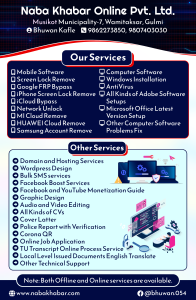Then, you must discuss the preset hardware states or conditions essential for running the test case or script. You must describe the features or items the test case or script will test. Some examples are code, design specifications, and requirements, among others. While describing these features or items, you need to know the level for which the test case or script is written. You have to mention an overview of the test scripts or the test cases scheduled for execution. Identifying each test case or script by a project-unique identifier and title is essential.


Besides defining the methodologies and standard procedures, project-based questions can consume most of your time. To describe a unique identifier to these documents, we can identify the summary of each document without actually opening them. This arrangement helps us find things faster and ultimately helps in wrapping the testing phase quickly. We need to have very specific inputs, steps and data for each test case that we create during test designing.
Automation Testing
You must mention one or more identification numbers, names or titles, part numbers, acronyms and abbreviations, release numbers, and version numbers. The clarity of the specification depends a lot on our understanding of test design and its role in the testing domain. During test designing we need to be very specific about the test cases that we create. For a given test level, test design can start once the test conditions are identified and enough information is available to write test cases. Designing can start once the test conditions are identified with sufficient data to produce high level or low level test cases.
If the output seems expected, clear the class completely as a success based on the selected data. However, this does not mean each piece of data will be successful, but since they are similar, the probability of that case is lower. The first type of test design technique is the state transition test design, which relates to the theory of automation. The theory describes a general machine design that satisfies the current requirements with any type of input.
Digital Experience Testing
The first essential element while creating the design specification is the identifier. This is logged at the top of the document and is unique for each test design specification. The need for this element in the document is that one software may contain many specifications relating to a single feature or group of features. The test case descriptions presented in this section test the requirements for a specific dialog, dialog messages, and message content in a single test case. This combination ensures that all the requirements that together comprise a dialog, dialog messages, and message content are tested at least once. The process for testing of system interface compliance then is accomplished through a careful systematic testing of all of the dialogs that comprise a system interface.
Based on the approach specified in the test plan, the feature to be tested for each unit must be determined. The overall approach stated in the plan is refined into specific test techniques that should be followed and into the criteria to be used for evaluation. The XML is an example of test case data that would pass all criteria (all pass-fails) identified in the output specification. The XML is an example of test case data that would pass all criteria (all pass-fails) identified in the input specification. Test case data has been prepared for positive test case data – i.e., test cases expected to pass.
Obviously, this will be the core of the test design document we need to create. Combining test design with other elements required to complete documentation forms test design specification. Considering the remaining test design classes, experience-based is the easiest and fastest solution but it’s not appropriate for regression and its test design definition effectiveness is lower than the two others. The model with execution class is the best as it is effective and efficient. It can also be combined with specification-based techniques such as use case testing and action-state testing. “More than the act of testing, the act of designing tests is one of the best bug preventers known.

This test design technique is only suited for experienced testers and QAs who can just see an application and recite various possibilities where an error can occur. As seen in the above example, we have cut down almost 42% of combinations and can still cover 100%. This makes the testing process a lot faster and increases the quality without performing exhaustive testing.
It is essential to note down the minimum count of alternatives or combinations of the input and output values considered acceptable test results. You should specify the minimum and maximum permissible test duration regarding the count of events or time. The maximum count of system breaks, halts, and interrupts that may occur should be mentioned. Drafting the proper and accurate test specifications is a significant part of the Software Testing Life Cycle. The reason is that although the test cases are efficient, the team will not generate the expected outcome if the testers fail to comprehend them correctly. In this process, the testers can understand the test cases by reading the test specifications.
- You have to indicate the type of the test input, that is, real or simulated.
- To test a DXFS system interface, the interface must be isolated from the hardware and central system software.
- This is a list of those persons who have reviewed the Test Case Specification and have approved the information in this document.
- Documentations in every domain provide reference material for team members and people involved in the project, either technically or non-technically.
- Test Design Specification plays a crucial role in simplifying the testing process.
Developing a test plan can take a significant amount of time and require coordination of many parties. It is recommended that test plan development begin after the system interface requirements have been completed and approved. This tutorial by Harish Rajora highlights the test design techniques, such as state transition and boundary value analysis, which are the principle behind a tool’s working. If you need to select a test design tool, you first must choose the technique for which you need the tool.












